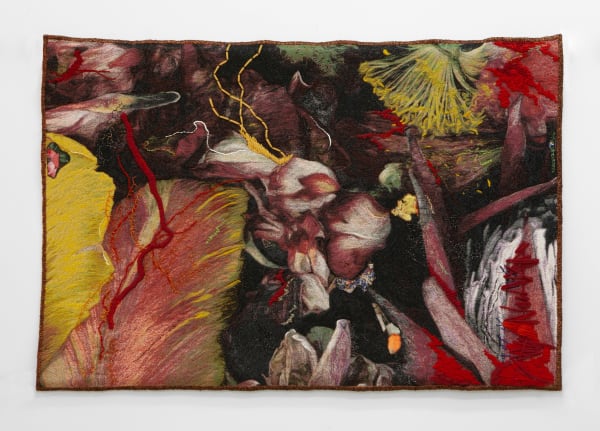Luzia Simons: The Scent of Flowers
In Luzia Simons’ artistic practice, flowers have long been the central motif. They appear as constant sources of both inspiration and metaphor in her acclaimed photographic series, such as Jardim, Lustgarten and Stockage, which have previously been presented at Galerija Fotografija. For Simons, flowers embody the symbolically rich contrast of both fragility and strength – they are symbols of life and impermanence while also reflecting on cultural identity and beauty in times of globalised exchanges.
Photography lies at the core of the artist’s work, serving both as a starting point and a medium to which she continually returns. Yet, Simons has developed a distinctive approach that goes beyond conventional photographs. Her scanogram technique, created using a high-resolution custom-made scanner, allows her to capture flowers in extraordinary detail with a depth and intensity that transform the familiar into something almost painterly, hovering between reality and illusion. Pushing the boundaries of her creativity even further, the artist has also created unique embroidered tapestries, bringing floral motifs to life in the textile medium, as well as delicate watercolours of flower petals and a large-scale collage, bridging the gap between realistic and abstract floral depictions.
This multi-layered exhibition combines the various media Luzia Simons has been developing, highlighting her continuous exploration of transformation, hybridity, and the interplay between natural and artificial forms. The Scent of Flowers joins photographs made using the scanogram technique, tapestries and watercolours, all celebrating both the beauty and complexity of nature. By translating the same subject through multiple media, the artist reveals the many ways in which perception can shift and meanings can multiply, constructing a rich, multilayered world where the power of flowers becomes both a visual and emotional experience. In this context, a blooming garden is both a source of inspiration and a meeting space where the human vision comes to life in natural forms. As a recurring theme in Simons’ work, the garden serves as more than a space of cultivation – it is a living archive of memory and cultural heritage. Historically shaped by global plant exchanges and colonial trade routes, gardens reveal how aesthetics and power intertwine, demanding a reflection on the histories of plant – and human – migration. In this sense, nature itself bears witness to movement, displacement and transformation. Luzia Simons’ artworks thus quietly remind us of the passing of time, bringing to the forefront the inevitable fading that gives beauty its poignancy. Each petal captured and vanitas-like motif reimagined becomes a meditation on transience and renewal, echoing our own fragile existence. Through this lens, Simons’ flowers are not only a celebration of life but also a subtle memento mori, inviting contemplation on what it means to bloom, to wither, and to endure in memory of eternity.
As mediators between cultures, circulating across borders, flowers join ideas, goods and people they so often accompany. In Simons’ work, the botanical is elevated to the realm of reflection on displacement and belonging. Suspended between life and decay, it evokes both the fleeting beauty of nature and the enduring traces of cultural exchange. In this way, Simons’ practice unfolds as a visual archive of migration and memory, where each composition becomes a site of encounter between the local and the global, and the intimate and the universal.






